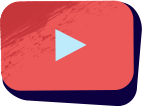


INTRODUCTION
In today’s crowded digital landscape, competition is fierce, making it increasingly difficult to stand out.
No matter the industry, there are a few key marketing goals that most businesses aim to achieve.

Brand Awareness
Your business is thriving—efficient systems are in place, the right team is in position, and you're delivering exceptional value to your customers. Yet, the world still doesn't know your story. To truly showcase the value you're offering, you need the exposure that will put your business on the map.


Brand Identity
You’re ready to revitalize the visual aspects of your brand—whether it's the color scheme, website design, or messaging. This crucial element forms the foundation of all your marketing efforts, shaping how your business is perceived across every platform.

Return on Investment
Success for you means driving qualified leads or increasing online sales that convert into paying customers. To truly measure that success, you need to consolidate all your marketing and sales data in one central location. This allows you to optimize what's working and eliminate what isn't, whether you're focusing on lead generation or e-commerce sales.


Business goals often encompass a blend of the objectives mentioned above and may not always align with a single focus. In fact, most businesses will have a combination of goals, with one ultimately standing out as the primary priority.
Effective marketing is a balance of creativity and strategic distribution. Video, once a costly resource, is now more affordable than ever for all stages of the buyer’s journey. Technological advancements have significantly increased video quality while lowering production costs, making it accessible for businesses of all sizes.
This democratization of video means small to midsized businesses, including your competition, can now leverage its power. If you’re still relying primarily on written content and static images, your business risks falling behind.
Equally important is how you distribute your videos. Simply relying on organic distribution won’t suffice in today’s competitive digital landscape. Posting videos on your website, social media, or newsletters without a targeted paid strategy will not generate the exposure needed to make a real impact.
While organic posting is important, it must be complemented with a strategic paid approach to ensure your videos reach the right audience and generate consistent results.
This E-book explores how video, combined with powerful paid advertising strategies, can benefit small to midsized businesses—transforming what was once exclusive to major brands into an accessible tool for growth.
It’s time to unlock the potential of online video advertising and elevate your business in an ever-changing digital world.

DISTRIBUTION
- FACTORS TO CONSIDER
- PAID SOCIAL
- PROGRAMMATIC VIDEO
- CONNECTED TV
- HOW THEY ALL WORK TOGETHER
CONCLUSION
VIDEO IS KING
We live in a world flooded with content. Streams of emails and social media posts bombard us daily, leaving the average person overwhelmed and struggling to stay focused. In the midst of this noise, the customer remains at the center. With so much information at their fingertips, customers are empowered to choose what matters most to them.
As a result, anything that doesn’t serve or entertain quickly gets ignored. The challenge for brands is clear: how do we create content that stands out? How do we get prospects to pause their endless scrolling and engage with our message?
The answer is video.
Video is the most powerful communication tool available today, helping to engage, qualify, and convert more buyers than any other medium. Its strength lies in its ability to educate, entertain, and captivate. When you present the benefits of your product or service in a dynamic and compelling way, you gain a significant edge over the competition. Below are some key reasons why video reigns supreme in communication.
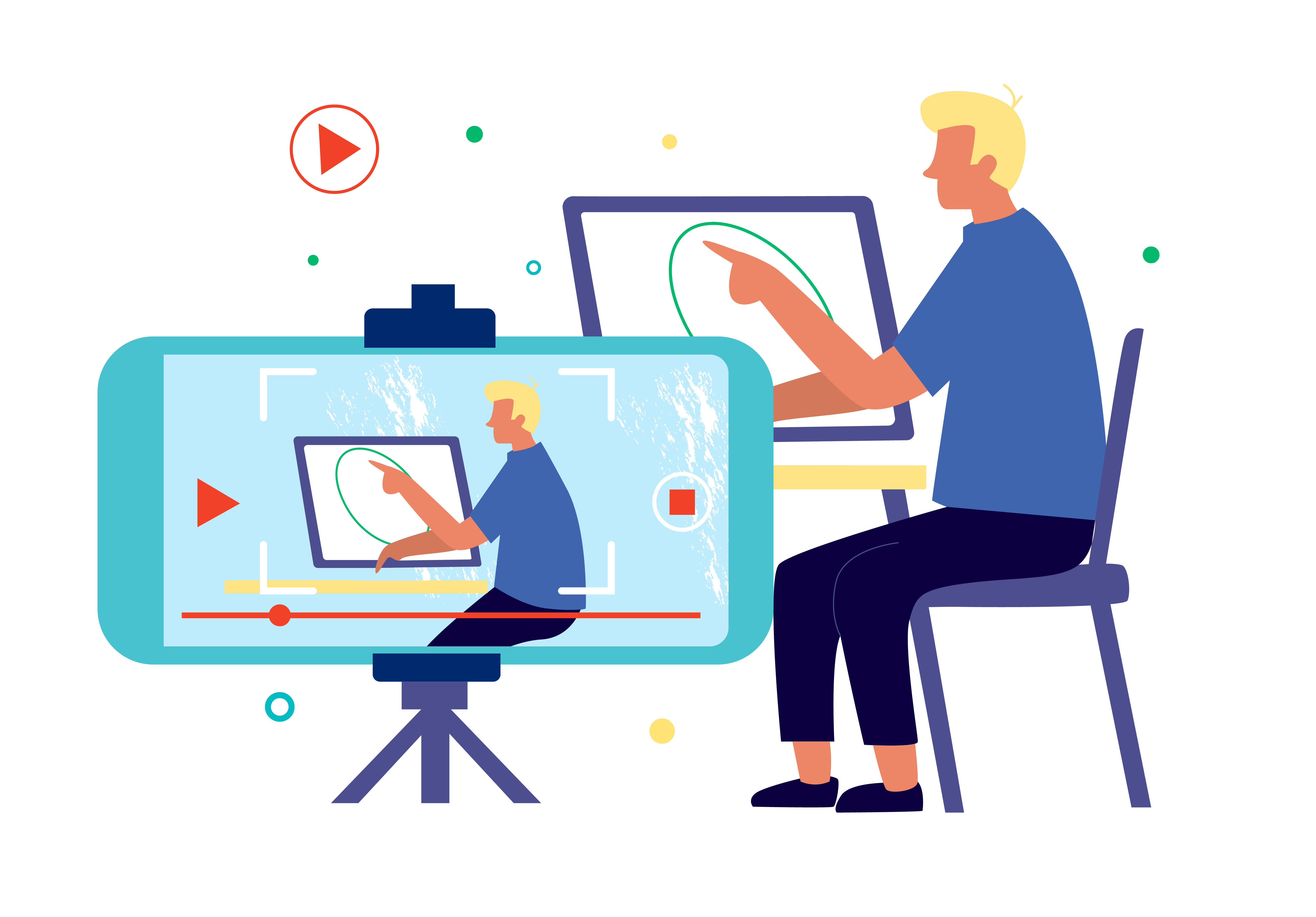
Science

The superiority of video as a creative powerhouse is grounded in science. According to a study performed by Minnesota University, it is proven that “visuals are processed 60,000 faster in the brain than text”. So biologically we have a predisposition to video over text or static images because we get more out of it. As a result, viewers can grasp more complex messaging in a shorter period when it is delivered through video.
Video Maximizes Story

Video resonates with today’s audience because it tells a richer, more immersive story. The world’s leading brands have achieved success by using thoughtful storytelling to help audiences connect with their message. Still images and text simply can’t create the same level of engagement. If you’re settling for less, your competitors will be investing in dynamic video content that delivers long-term brand storytelling, capturing attention and engaging audiences in ways no other medium can.

Video is Affordable
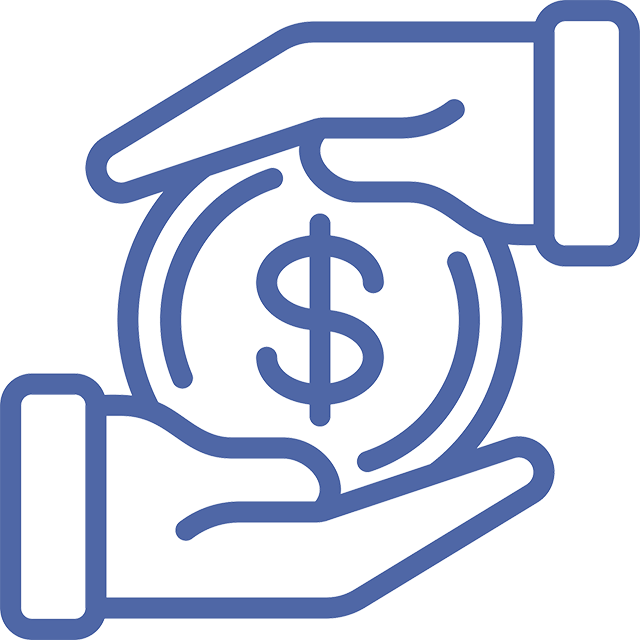
Historically, video production has been expensive, especially for small to mid-sized businesses. Large brands once spent hundreds of thousands of dollars on television commercials or corporate videos. However, with the rise of affordable equipment and software, high-quality video can now be produced at a fraction of the cost. This shift enables brands to create content at scale, rather than investing in just one video.
Video Can Be Repurposed
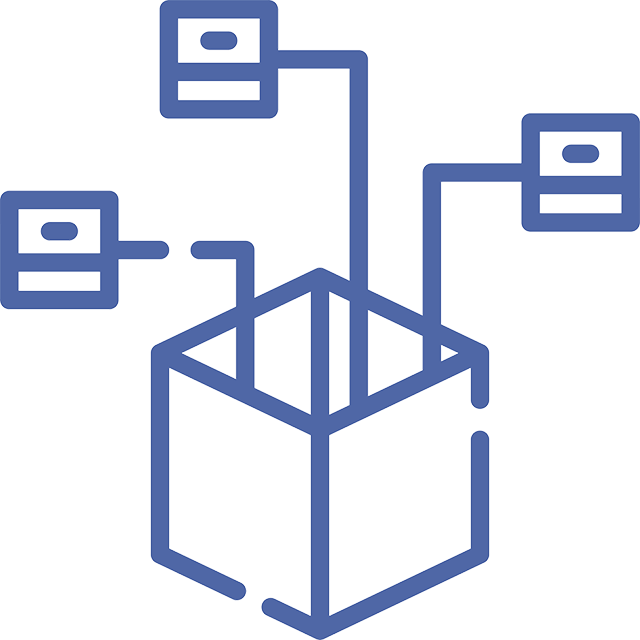
A key benefit of video is that you can repurpose footage into a number of different ways that will get you much more mileage than any other type of creative asset. Video footage that is captured can be repurposed into mini-edits, images and graphics. This gives your marketing efforts the ammunition and flexibility to distribute more content in a cost-effective manner. Below is a representation of how multiple creative assets can be pulled from a single video.

Video Comes in all shapes and sizes
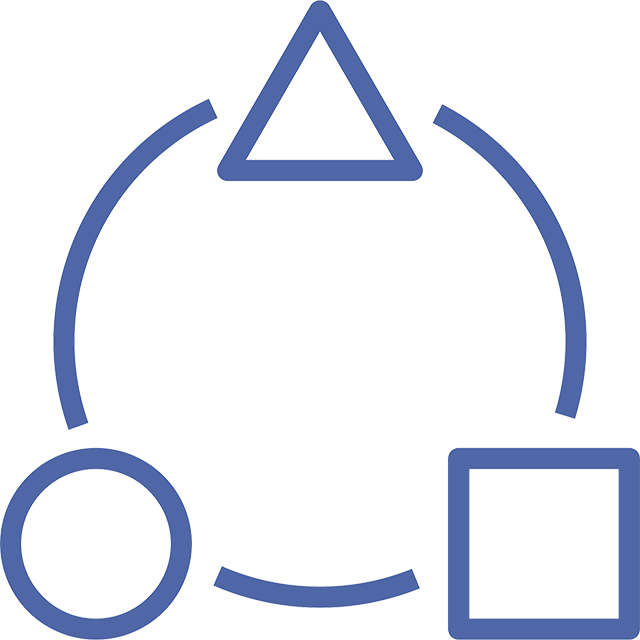
When creating videos for your business, you have the versatility of producing a wide range of video styles and types. All of these video styles and types can be used to address prospects at different stages of their buyer’s journey. Often, brands aren’t aware of the wide range of creative approaches that are at their fingertips. When they think of video, they can have a very narrow perception of what that means.
EXPLORE VIDEO STYLES AND TYPES
After video production, it is important to consider the platforms on which to publish your content. At Marketing Reel, we help you choose the best channels to success, reaching your goals and seeing business flourish.
LEARN MORE
As video marketing agency, we utilize various video styles in order to best suit your business goals. Each style has different processes that ensure your message has the highest impact on your intended audience.
LEARN MORE
Each video type has its own purpose and benefits. We work with you to create videos that help achieve your specific business goals.
LEARN MORE


PAID DISTRIBUTION

The key to any business achieving its goals is pairing effective creativity with the right kind of distribution. Placement of your videos on platforms that not only have large audiences but the ability to hyper-target individuals within those pools of people is crucial to getting your message out there in an impactful and cost-efficient way. Even more importantly, being able to track and provide the necessary metrics is key to iterating your tactics to find the best approach possible.
Delivering the right message about your product or service to your target audience, at the right time and with the appropriate frequency, produces consistent business results. Otherwise, you’ve created a video that you might as well hang on your wall and admire. Sure, it might make you feel warm and fuzzy inside, but for it to justify the costs – it needs to produce quantifiable and consistent results.
So, what is the right type of distribution that best optimizes your video marketing?
We’ve identified a few criteria that make a specific distribution platform ideal. Before exploring this question, there is one thing to keep in mind – organic distribution is not enough. Simply posting your videos on your social media pages or through your email newsletter likely won’t be enough unless you have already built up a significant audience.
You will not get enough reach to bring in predictable results. In other words, there aren’t enough new people that represent your target audience that you have the potential to do business with.
Organic distribution should always be part of your marketing strategy, but brands should not delude themselves into believing that organic posting can move the needle in a way that is tangible or consistent. The reason for this is that the algorithms on platforms such as Facebook, Instagram and Google provide very little exposure for non-paying posts.
KEYS TO SUCCESS
REACH
Whatever platform you choose to distribute your message on, it should possess enough of an audience to make it worth your while. Therefore, platforms like Facebook, Google, YouTube, and Instagram are extremely successful. They can tap into massive audiences in the billions of active users.
TARGETING
With a large audience you have the potential to make an impact. However, you exponentially increase your odds of making an impact with the ability to hyper target prospects. So, a successful distribution platform must be able to collect unique identifying details about their audience that can be used by advertisers to make more informed and targeted decisions. Examples of this precious information includes location, demographic, interests and behavioral targeting.
TRACKABILITY
It used to be that the tracking and measurement of advertising efforts were often left in an abyss of uncertainty. This was due to the lack of technology necessary to fully monitor efforts and provide accurate reporting.
However, as we evolve into a more sophisticated digital first world, the means are available to accurately track and measure nearly every touch point. This shift was seismic in nature because now marketers can be held accountable to prove a return on marketing spend. This also marked an important jump in data analysis and the ability to iterate and improve campaign performance based on cold hard data.
WHAT CAN BE TRACKED?
- Engagement
- Exposure and Reach
- Awareness
- Conversions
REPORTING
As the late Peter Drucker stated, “if you can measure it, you can improve it.” In today’s digital world, you often need to hit multiple touchpoints with a potential customer before a conversion (form fill, direct purchase, phone call, booked meeting) is realized. The ability to track the performance of ads is what leads to robust reporting that can be analyzed in order to make more productive decisions that improve performance.

Considering the pillars of reach, targeting and trackability – we have identified three clear distribution methods as winners when it comes to possessing these characteristics.
Google Search
- Google search ads are text-based ads.
- High intent from the person searching a query inside of Google
- Less risky for the marketer because you pay only when people click on the ad.
- Benefit greatly from video placed on the landing page of the advertisement.
Google Display
- Video display ads across the internet.
- Served to audiences based on demographics, behaviors and interests that indicate that they would be likely to click on your ad.
- Reach a larger or completely new audience than simply through search.

1 Reach
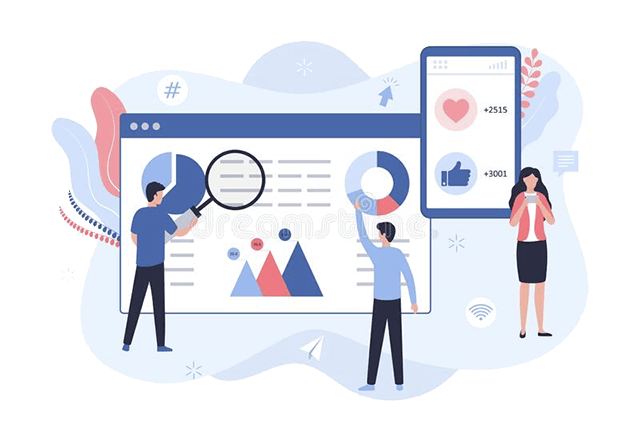
Google has the largest market share of search with 86.86 percent. Just in the US alone, there are 246 million unique users and nearly 4 billion throughout the word. The Google Display Network reaches 90% of Internet users worldwide, across millions of websites, news pages, blogs, and Google sites like Gmail and YouTube.
2 Targeting

Google is the standard when it comes to search. Keyword search is an incredibly effective method of targeting because the prospect shows high intent by searching for specific keywords within the Google search engine. Although video is not involved at this stage of the process, video is a highly effective tool at converting viewers once they click on the Google ad and are directed to a landing page.
3 Tracking

Google use cookies to track users as they move throughout the internet. As a result, users develop a bread crumb trail of their interests based on the sites that they visit. The collection of cookies is used to serve ads to prospect via Google display advertising. It is important to note that Google has announced that cookies are being phased out for third party users and also on their highly popular Chrome browser. The reason for this is to protect user privacy. However, Google will still collect user first party data when using their products such as when searching on Google or YouTube.
4 Reporting

Everyone is familiar with Google Analytics. Cookies were largely part of Googles ability to track users across the internet. However, Google is opting for a less creepy type of tracking that doesn’t focus on delivering ads to the specific individual. Rather it protects the individual by placing them inside of general cohorts of similarly bundled individuals. Then the ads are served based on the cohort rather than at the granular individual level.

Look up your Google Search history and use those terms to build out your Organic and Paid YouTube strategy.
YouTube

YouTube ads are a great way to leverage video using all the power of Google targeting and trackability. On YouTube, you typically only pay when a viewer watches your video for a certain amount of time.
1 Reach

YouTube is the world’s 2nd largest search engine behind Google and has approximately 1.9 billion active users. YouTube reaches more people between the ages of 18-34 through mobile in the US than any TV network does through any channel. YouTube reports mobile video consumption rises 100% every year (Source: HubSpot) and we watch over one billion hours of YouTube videos a day.
2 Targeting

YouTube ad targeting is based on demographics such as age, gender, parental status, household income. Other methods include interests such as affinity groups (people already interested in relevant topics’), Custom intent audiences (targeting people that are currently researching topics, products and solutions on the web).
3 Tracking

Track key metrics such as:
- Engaged Views
- Click Performance
- Engagement performance
- Reach & Frequency
- Video Viewership
4 Reporting

Report features include: Video performance for specific keywords, audience types, and demographics. This powerful reporting is accentuated by automated reporting, visual charts, custom tables and downloadable reports.

Did you know that you can deliver videos to users based on their Google search history.
Facebook & Instagram

Facebook and Instagram ads perform better with video. Videos often provide a pattern disruption necessary to hook a viewer’s attention as they scroll passionately through their news feed.
1 Reach

1.6 billion are connected to small businesses everyday. Facebook generates 8 billion video views on average per day (Source: Social Media Today) (Quartz) Instagram video posts have the highest overall engagement rate (38% higher than image posts) (Mention.com)
2 Targeting
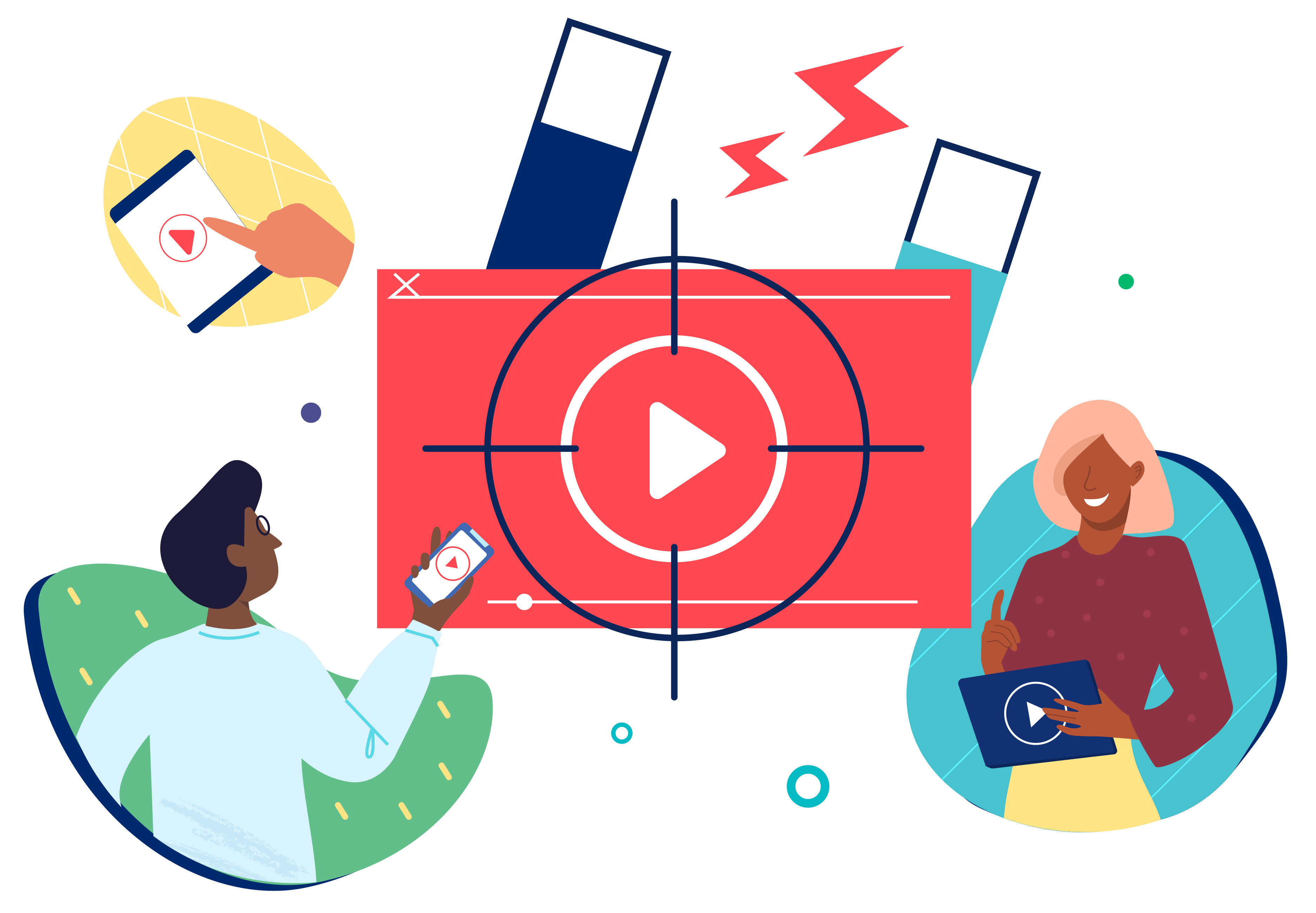
You can target your audience based on recent purchasing behavior, life events, custom, and look-a-like audiences. The list is vast and a gateway to getting your message in front of the right person at the right time and place.
3 Tracking

Advertisers pay for the ability to serve ads on these platforms to people that have specific demographics, interests and behaviors that they are looking to target. Many of the actions you take on Facebook and Instagram are tracked and recorded as data that Facebook uses to provide value to advertisers who run ads on their platform. Much of this is done by the placement of a pixel that records page views and other events.
4 Reporting
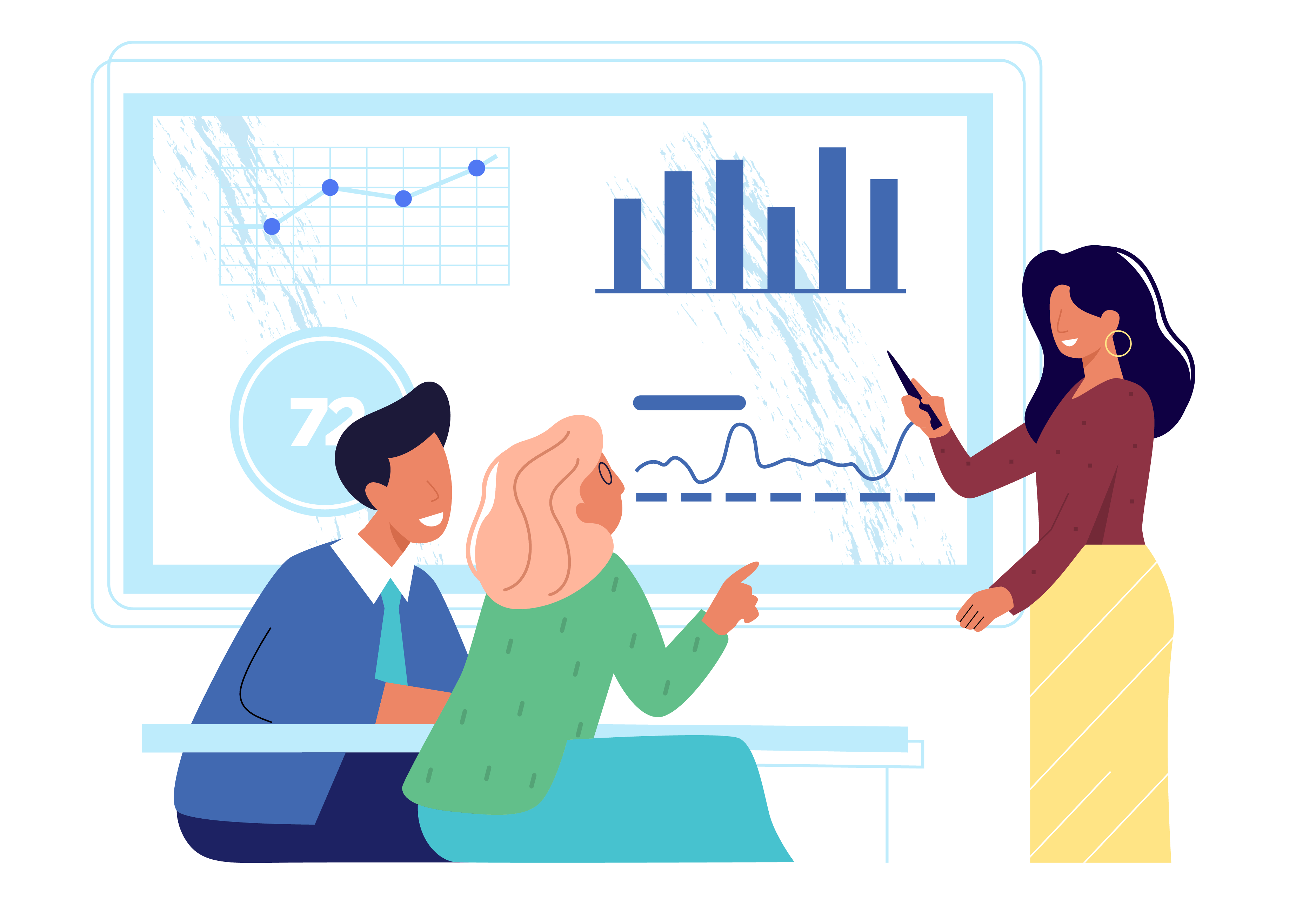
Some of the ways you can measure success is monitoring the below metrics:
- Engagement
- CPC & CPM
- Reach
- Impressions
- CPA
- CTR
- Video % Watched
- Frequency

Did you know that you can deliver videos to users based on their Google search history.
PROGRAMMATIC DISPLAY & VIDEO

Stream video across publishers across the internet. Bots purchase ad space based on pre-set parameters. Programmatic video advertising are 15 or 30 second ads that occur before, during or after free video is played on the internet. Display ads are placed
HOW IT WORKS
1 SET GOALS
2 IDENTIFY TARGETING
3 IDENTIFY TARGETING
4 CREATE VIDEOS
5 LAUNCH & ITERATE
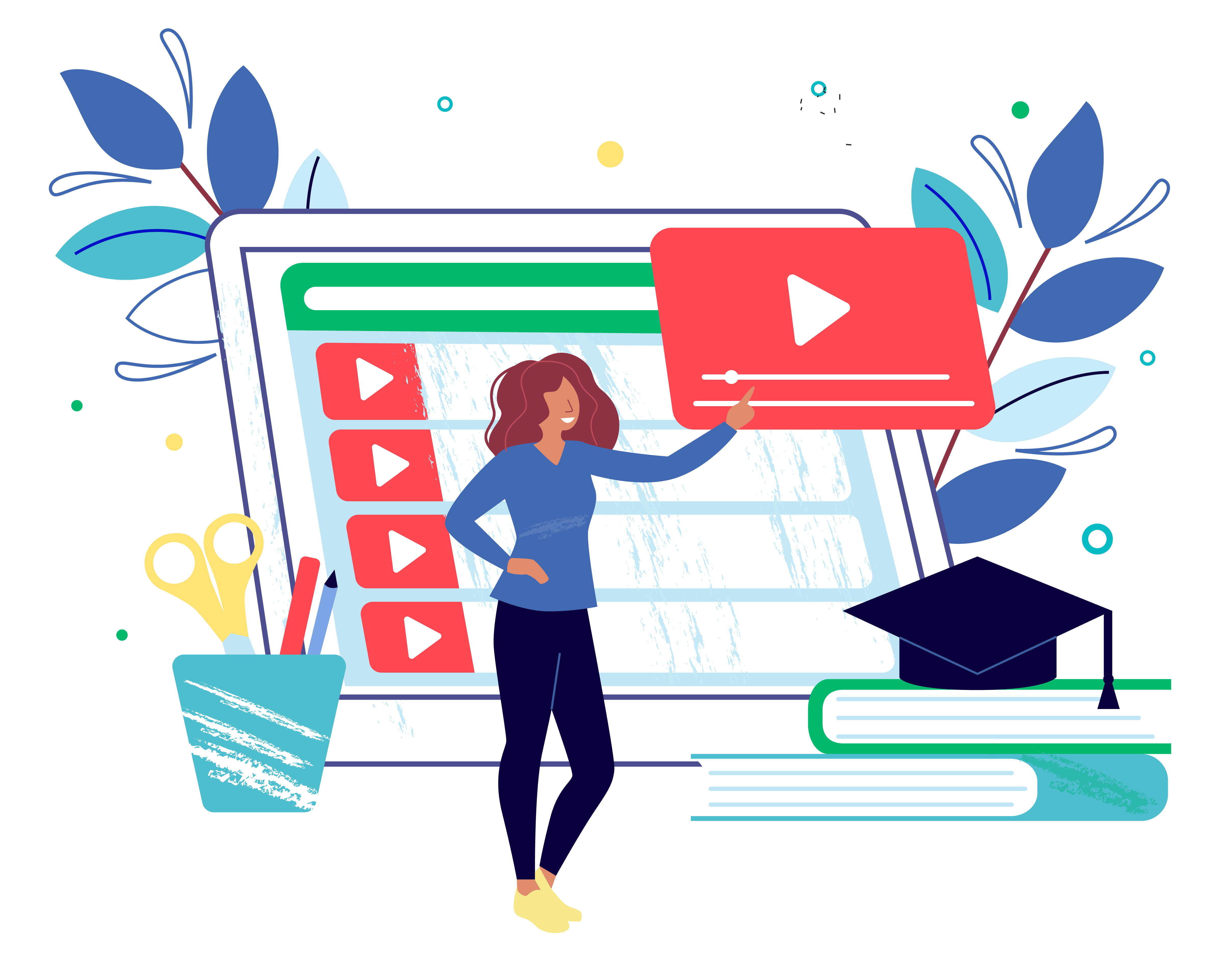
Reach

Display
- – Standard Sizes: 300×250, 336×280, 728×90, 300×600
- – Formats: JPG, PNG, GIF, HTML5
Programmatic Video
- – Pre-Roll
- – Mid-Roll
- – Post-Roll
- – In-Banner
Targeting
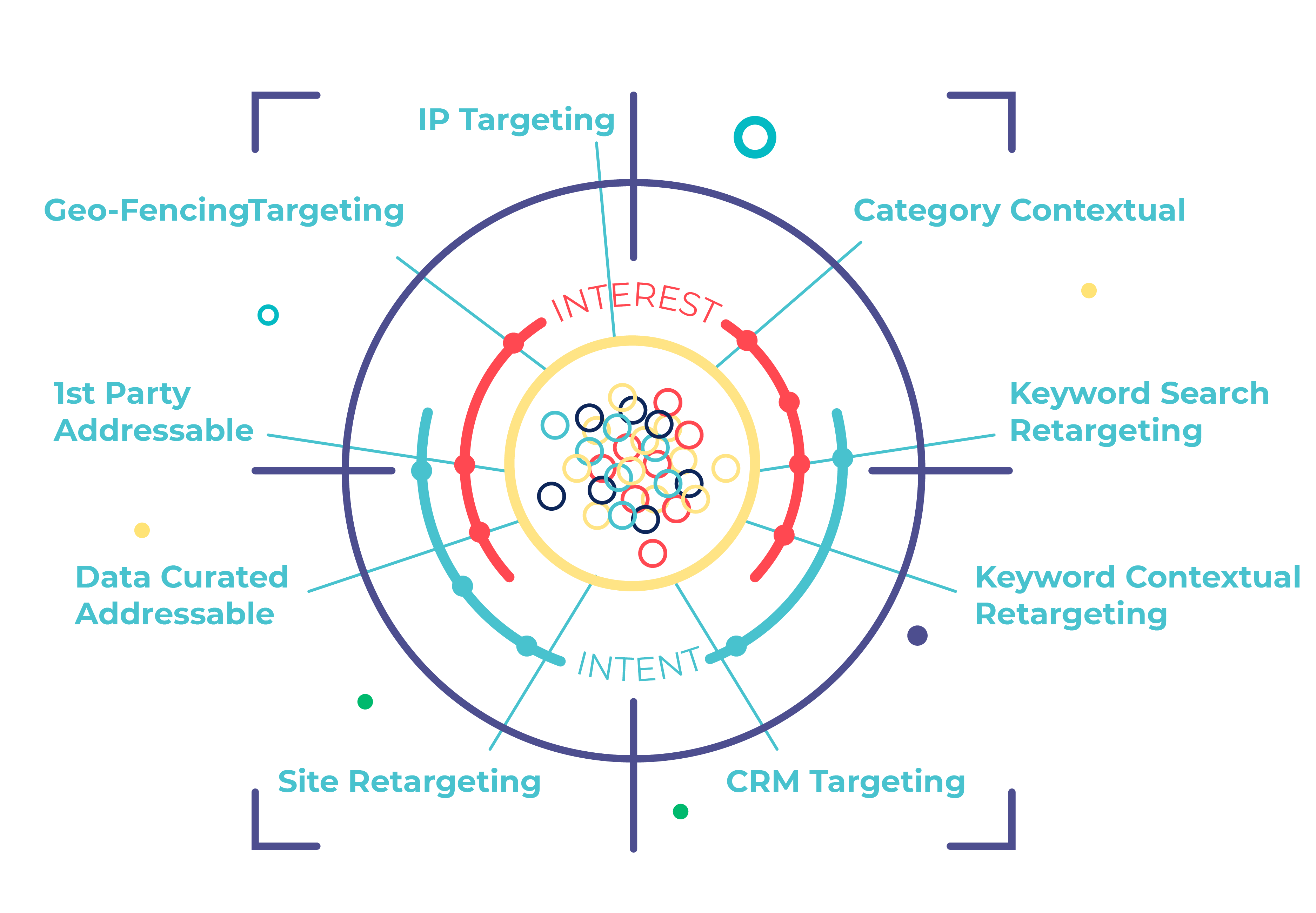
Some of the many ways you can target!
- Geo-Location
- Keyword Search
- Demographics
- Device Targeting
- Contextual Targeting
Tracking
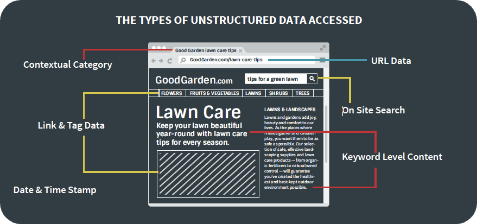
Instead of utilizing vague 3rd party audience segments where the source and quality of the data is questionable, use unstructured data with individual data elements like location, contextual content, keywords searched, and browsing behavior to create custom audiences.
Reporting

Ways to measure success:
- CPM
- Impressions served
- Clicks
- Click Through Rate
- Actions (Form fill, Button Event)
- CPA
- Video Completion Rate
CONNECTED TV
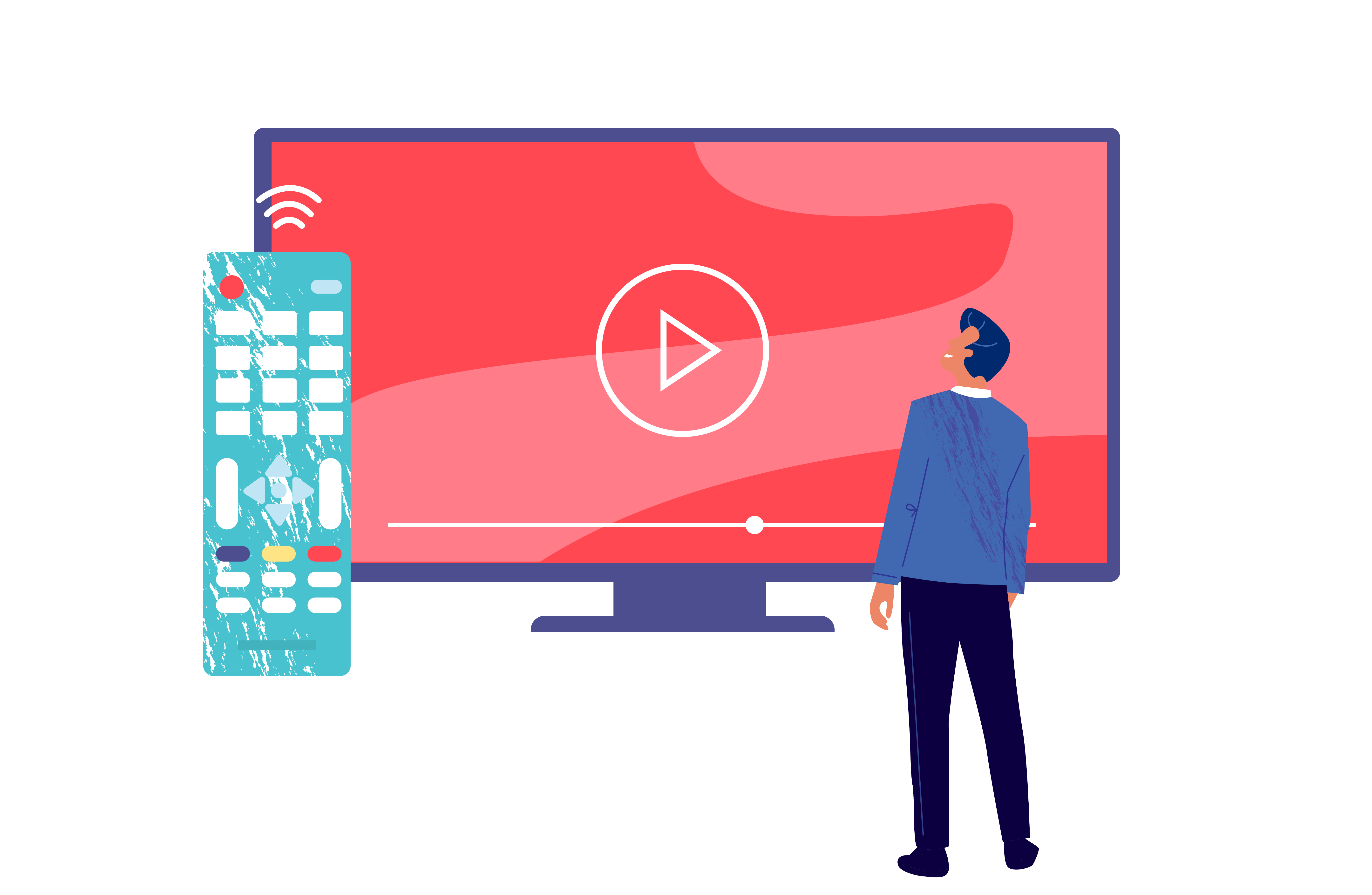
Connected Television includes any device that is used to connect to the internet in order to watch television programming. These devices include smart TV’s, desktop/tablet/mobile devices, and 3rd party devices such as Roku, Amazon firestick, Apple TV and some select gaming consoles. CTV is the most impactful and effective way to deliver measurable video creative to specific audiences.
1 Placement
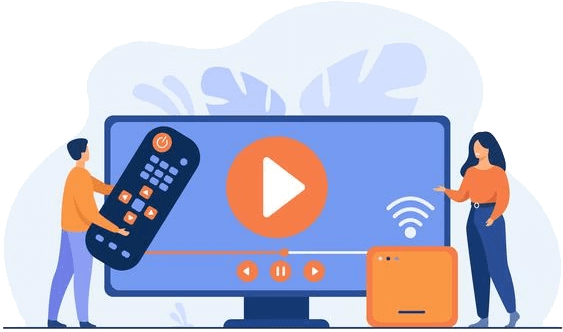
Tablets | Phones | Desktops
![]()
Connected TV apps like Hulu, YouTube and Twitch can be streamed directly onto devices.
Smart TV’s
![]()
A television with a built in connection to the internet.
OTT/CTV Devices
![]()
Roku, Chromecast, Amazon Fire Stick, Apple TV, and the major gaming consoles.
2 Reach

Addressable Geo-Fencing
Upload 1st party CRM data that includes individual addresses that then create a geofence around individual households. Then, devices seen within those households can be served mobile, video and/or CTV ads.
Behavioral Data
Bringing the precision of digital targeting to Television. Leverage the ability to target users based on keywords, context and other online behaviors.
Demographic Targeting
With access to 126 million U.S. households, you can create custom audiences for targeting at the household level.
3 Targeting

Addressable Geo-Fencing
Upload 1st party CRM data that includes individual addresses that then create a geofence around individual households. Then, devices seen within those households can be served mobile, video and/or CTV ads.
Behavioral Data
Bringing the precision of digital targeting to Television. Leverage the ability to target users based on keywords, context and other online behaviors.
Demographic Targeting
With access to 126 million U.S. households, you can create custom audiences for targeting at the household level.
4 Tracking

In Store Conversions
If you are a business with a physical location, you can draw a virtual boundary around your place of business. You can then track what amount of physical traffic at your location has previously seen one of your ads.
Web Based Conversions
Track online actions such as web page visits, form fills, purchases and more from users who were served CTV ads.

MARKET SHIFT
Linear TV to Connected TV

On Demand Model
People are watching what they want when they want.

Live Sports
In recent years, Connected TV has added live sport making it more attractive platform.

Price
Linear TV is more expensive for the end consumer. With the onset of Covid-19, consumers had to make a choice of what to cut and what to keep.

Real Time vs. Upfront
Linear is purchased in large chunks as the networks release their schedules. CTV is a real time market that allows for more trackability and the ability to make data driven decisions.
ADVANTAGES OF CONNECTED TV VS. TRADITIONAL TV

LOCALIZED
GEO-TARGETING
Geotarget down to the zip code level vs. an entire DMA/city

AUDIENCE TARGETING
Target by demo, interest, behavior, etc. vs. an entire show’s audience

PREMIUM CONTENT
Access to the same premium networks, shows & content

AGILE TESTING & LEARNING
Test at smaller budget levels & optimize as learnings are captured

MEASUREMENT & ATTRIBUTION
Connect back to other owned devices to track actions & office visits

DATA-DRIVEN OPTIMIZATIONS
DATA-DRIVEN OPTIMIZATIONS More robust tracking to drive data-driven learnings & insights
ALL WORKING TOGETHER

- Connected TV
- Programmatic Video
- Social Ads
Create Brand Awareness.

Prospects search Google for brand and products.

Google search captures searches relevant to your brand.

Remarketing with:
- Social Ads
- Video Display ads.
CONCLUSION
As brands continue to adopt a digital-first presence, the ability to stand out in the marketplace is key to survival. Advances in technology have reduced the cost of video production and made it more accessible to small businesses. Additionally, the proliferation of digital marketing channels setup for the distribution of powerful video campaigns has ushered in an era of affordable multi-funnel advertising (Attract, Engage, Convert, Retain) that is hyper-targeted and trackable. As a result, businesses can make real-time decisions based on data and alter their tactics to optimize for their definition of success. We truly are in the era of affordable creativity with a purpose.

